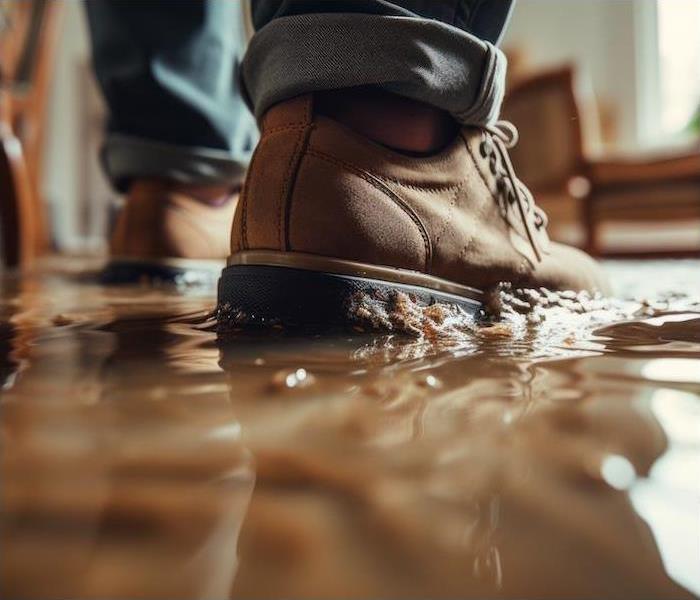The Basics of Flood Damage Prevention | SERVPRO of Dublin/Vidalia/Claxton
4/1/2024 (Permalink)
 SERVPRO of Dublin/Vidalia/Claxton is ready to help in a moments notice after spring showers leak in to your home or business.
SERVPRO of Dublin/Vidalia/Claxton is ready to help in a moments notice after spring showers leak in to your home or business.
The basics are always the best place to start when it comes to doing something well. If you have ever helped your kids with math, you know that without the basics, things can get really challenging.
Taking things back to the basics is a good way to protect your home from disasters, too. A little basic care and maintenance for your home will keep things safe when threats head your way. We might not be able to control Mother Nature and all the fury she can bring, but when we are prepared, the damage will be considerably less.
Water is one of the top ways that homes are damaged around the nation. That makes going back to the basics of water damage prevention crucial for keeping your home safe.
There are a number of ways that flooding can start. Manmade disasters that happen inside your home can be surprising and deal out quite a bit of damage, but they are often easier to find and fix than a natural disaster.
Flooding can be common in our community. The Oconee River seems to enjoy overflowing after heavy rains, especially during the spring and summer. That leaves pretty much all of us susceptible to flash floods, river floods or even roof leaks.
Getting to know your flood zone is a great, basic place to start when it comes to preparing for a potential disaster. When you understand your particular risks, you will know just how much you need to do to stay safe.
Whether your home is in a flood zone or not, it is important to note how your yard fares when heavy rains set in. If a storm leaves your yard full of puddles, adding extra drainage or lengthening your gutter downspouts can help pull water away from potentially entering your home.
For a yard that has a lot of trees, adding gutter covers can protect your roof from potential water ponding due to blockages. You will also want to check your roof after high wind blows through to keep it clear of limbs and other debris. The more you can do to keep water steadily moving away from your house, the better.
Once you get familiar with your area, there are a few other ways you can protect your home from potential flooding. Yard work can go a long way in keeping water out even in the heaviest rain or as the river starts to rise.
Take a look at the sloping in your yard. There should be enough of a slope to keep water moving away, but you want to ensure there isn’t a spot where water can pond. If you have a location around your home that often gets muddy, a rain garden or other organic material can pull water down into the ground and help prevent potential issues. Underground downspouts on your gutters can keep water out of your yard altogether by dumping it directly off of your property.
Inside, take notice of the seals around your windows and doors. Re-caulk any areas that have begun to deteriorate in order to keep things tight and dry. If you have a basement, have it professionally resealed any time you find cracks or gaps. A sump pump in the basement can also help keep things dry.
Go back to the basics in your home in order to do everything you can to prevent potential flood damage. Keep your yard in good shape, and maintain the inside of your home regularly. It will be much easier than teaching your kids math—we promise!
Do you have water damage in your home? Contact us at SERVPRO® for fast recovery.



 24/7 Emergency Service
24/7 Emergency Service